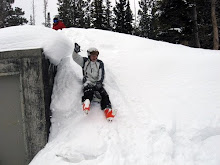Organic molecules, Carl Sagan’s “fundamental biological building blocks” of life on Earth are a cornerstone of the discourse contained in this chapter. Sagan himself defines them simply as carbon-based compounds, excluding carbon dioxide and carbon monoxide. Any student of organic chemistry would recognize this simple definition, and likely dread any further discussion of the topic. Biologists on the other hand, may be much more interested in further exploring the defining characteristics of organic molecules. They may be curious about why our planet’s life revolves around these modified carbon chains... Do organic molecules possess an intrinsic life-harboring property lacked their inorganic counterparts? A common distinction drawn between organic and inorganic compounds can be found in this very question – That is, organic compounds are distinguished as being derived from, or contained within living systems. Thus, compounds such as diamond are classified as inorganic despite being comprised solely of carbon.
Sagan likely saw a flaw in this understanding, and obviously spent some time pondering the nature of organics in the universe and their involvement in the origins of life. He saw that organic chemistry was the chemistry of life on our planet, but also recognized that understanding how organic chemistry had lead to life on Earth would necessitate a probe into organic chemistry prior to life. Since so much of our current understanding is based on observations of organic chemistry operating in biological systems, it would seem prudent to understand the chemistry of carbon compounds as they behave outside of these systems. Sagan reasons that this understanding can be found by looking beyond our planet – Beyond the realm of life as we know it.
His rationale is founded on early spectroscopic measurements which indicate the ubiquitous nature of organic compounds in our solar system (and the universe in general). Logic might suggest then, that given the apparent importance of organics to the origins of life, we might observe life where organics exist. This begs the question: What is the likelihood of such a discovery? Well, as Sagan points out – that depends. It depends on the state of water, the vapor pressure of atmospheric gasses, the exposure to energy sources such as ultraviolet radiation from starlight, etc. The organics are there, so what is the right combination of everything else? Well, it turns out that Earth is just about right. Not to be cheeky – This is glaringly obvious as I am clearly alive and writing this essay. But think about the example of Saturn’s moon Titan. Here is a satellite world harboring the same organics that likely gave rise to life on Earth. What would happen on Titan if conditions more closely resembled those on Earth? Would we see life evolve over eons as it has on Earth?
This begs the question: Is it really the chemical/molecular composition of our cosmos which enables life to spring forth, or are the limiting factors actually the conditions required to do so? If the Miller-Urey experiments are any indication, the precursor molecules for amino acids and nucleic acids can be formed in early Earth conditions from nearly ubiquitous organic material. And if, as Sagan argues, this wealth of organic molecules can come to exist on a planet through on-site formation, or by collecting from cosmic debris, then the probability that life forms from it would be dependent on the circumstances present on a planet more than the existence of the organic material itself. So, again we return to the likelihood of the existence of Earth or other Earth-like planets where liquid water may exist to catalyze the generation of higher-order organic molecules. A quick search online turned up an estimate that 20-60% of stars in our galaxy may contain earth-like planets within a “warm dust” zone around their star, where temperatures range from -280 to 80 degrees Fahrenheit, and support planetary formation. This would seem to indicate that our planetary conditions are not all that rare, and given the interstellar organic ubiquity discussed by Carl Sagan, perhaps the life we see on Earth isn’t all that rare either.
